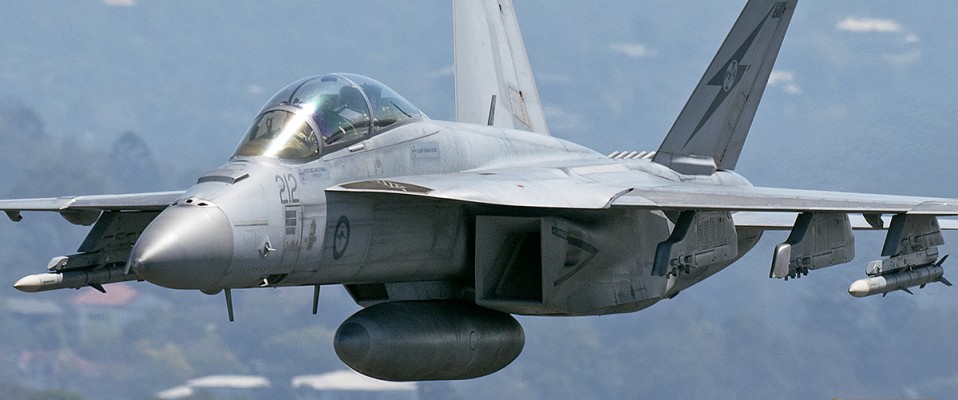Here’s to you kid, Celebrating 15 years of service.
Royal Australian Air Force F/A-18F Super Hornet commemorates 15 years of service at Avalon 2025.
Article: Jaryd Stock
Images: Jaryd Stock, Ryan Imeson, Joel Thomas
It has been fifteen years to the day since the Royal Australian Air Force (RAAF) welcomed a super addition to its air combat fleet, the Boeing F/A-18F Super Hornet.
Now, 15 years later, the Australian International Air Show 2025 held at Avalon Airport celebrates the incredible legacy and enduring combat capability of this remarkable aircraft that arrived in Australia on March 26, 2010.
As the first new air combat platform introduced to Air Force in 25 years, the Super Hornet — affectionately known as the ‘Rhino’ — was a critical solution to bridging the gap between the retirement of the legendary F-111 and the arrival of the F-35A Lightning II.
With 24 aircraft delivered by late 2011, the Super Hornet quickly proved its worth as a versatile and powerful multi-role fighter flying both No.1 Squadron and No.6 Squadron under the No.82 Wing Umbrella at RAAF Base Amberley
From the outset, the Rhino brought cutting-edge technology and operational flexibility to Air Force.
Larger than its ‘Classic’ Hornet predecessor and flown with a two-crew configuration, the Super Hornet offered enhanced strike capabilities in both air-to-air and air-to-ground missions.
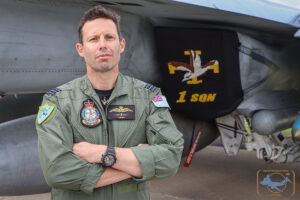
No.1 Squadron Commanding Officer, Wing Commander Trent Baldry.
Wing Commander (WGCDR) Trent Baldry, Commanding Officer 1 Squadron, said 1 Squadron operationalised with the Super Hornet on December 8, 2010 after rigorous training in the United States.
“Flying the Super Hornet is an incredible privilege — the two-crew model of the Rhino consisting of a pilot and a Weapon Systems Officer (or WSO) truly enables a simultaneous multi-role capability increasing its lethality and survivability in combat,” Wing Commander Baldry said.
“The Rhino and its crews have proven this time and time again over the past 15 years both on exercise and on combat operations in the Middle East.
The Super Hornet’s combat credentials were cemented in October 2014, when it was deployed for strike missions supporting Australia’s coalition operations against Islamic State organisation in Iraq. These missions marked the first combat deployment for the Rhino and the first RAAF combat deployments since Classic Hornet operations in Iraq in 2003.
Even in recent years the Rhino’s versatility has been on show with the aircraft receiving a number of upgrades to keep the aircraft at the forefront of RAAF Air Combat Group’s strike assets.
“It’s an absolute honour to fly the Super Hornet and to be part of the legacy of this remarkable aircraft. And from the aircrafts introduction in 2010 to now, the aircraft has evolved significantly with the way the employ and deliver the weapons onboard through to the software we operate and the way we have upgraded the Super Hornet it has changed significantly.”
Recently the Rhino evolved significantly with No.1 Squadron conducted live firing tests off the coast of California of the AGM-158C Long Range Anti Ship Missile (LRASM) marking a significant milestone in the RAAF’s long-range maritime strike capability.
“It’s a significant capability that the Super Hornet now possess that goes towards our strategy and deterrence by denial”, WGCDR Baldry stated.
At least two live weapon drops of the LRASM were recorded and the vital experience was gained from these tests that were conducted from U.S. Naval Air Station Point Mugu
“Those tests we undertook went incredibly well, and it is exciting to work along side our U.S. Navy counterparts, the aviators at No.1 Squadron got a lot of experience working alongside them and that knowledge was valuable.
I really encouraged our team in the U.S. to take in and understand the significance of what we were able to achieve with the LRASM tests, it was a remarkable achievement”, stated WGCDR Baldry.

In addition to the live-firing test, the operational evaluation included a comprehensive validation of weapon preparation, loading procedures and targeting systems.
The ADF also simulated a long-range maritime strike scenario, supported by an Australian E-7A Wedgetail and EA-18G Growler alongside a United States Navy P-8A Poseidon.
WGCDR Baldry says, “That mission highlighted a couple things firstly it highlights the importance of that whole chain of platforms operating in that battle space, for instance the E-7A Wedgetail operating as the C2 piece (Command and Control) to the Rhino as the payload delivery asset supported by the EA-18 Growler.
Secondly it highlights the role of the Super Hornet and how important and how potent the aircraft is and the capability it has and the squadron is to the defence of Australia.”
These coordinated efforts underscore the strategic partnership between Australia and its allies, reinforcing the nation’s commitment to maintaining robust and responsive defence capabilities.
For a number of years now No.82WG and No.1 Squadron have been conducting the Operational Conversion course to the F/A-18F Super Hornets at RAAF Base Amberley.
The Operational Conversion process involves training pilots that have graduated to fast jet operations with 76 Squadron on the Hawk Mk.127 trainer. Once assigned to No.1 Squadron the aviators are trained to operate the F/A-18F Super Hornet in real-world combat and operational scenarios.
The course focuses on a range of skills, including flying tactics, weapons employment, mission planning, and advanced systems operation.

WGCDR Baldry states, “The (OPCON) course is really important to train our men and women and to be immersed in the Australian fighter culture,
and not to say the training we formally had with the U.S. Navy was inferior, it’s that their focus was more on the maritime aspect and we train differently so its important for the aviators to be trained in our culture.”
At this years Avalon Airshow the Super Hornet will be on show to all those that attend the event, both Woody and Langas this years air demonstration team flying the Rhino are really looking forward to showing off the aircraft to the public.
Current Air Commander Australia Air Vice-Marshal Glen Braz had fond memories of the Super Hornet’s introduction and said the aircraft had remained a key component of Australia’s air power strategy.
“On 26 March 2010, as Commanding Officer No. 1 Squadron, I referred to the outgoing F-111C aircraft and said, ‘It will be sad to see them go … but the future is bright’,” Air Vice-Marshal Braz said.
“The F/A-18F Super Hornet has proven to be a formidable capability.
“I am so proud of the aviators who have worked so hard to shepherd the platform to this important milestone.
“Now 15 years on, as Air Commander Australia, I underestimated how bright the future would be.”
Once envisioned as a transitional fighter, it has become integral to Air Force’s combat capability.
Today, 1 Squadron proudly operates the Super Hornet out of RAAF Base Amberley.
As the RAAF celebrate 15 years of the Super Hornet in Air Force service, the Air Force would like to acknowledge the dedication of the personnel who have flown, maintained, and supported this remarkable aircraft — ensuring that it remains a powerful symbol of Australia’s commitment to air superiority and national security.
Here’s to the Super Hornet — 15 years strong and hope you last for another 15 years to come.
Australian International Airshow concludes on Sunday the 30th of March, tickets can be found at http://www.airshow.com.au
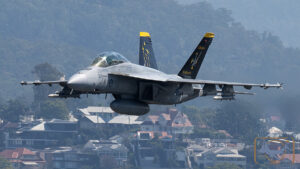
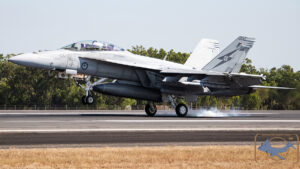

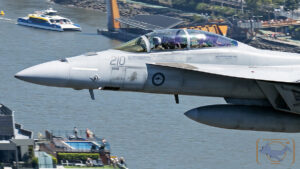
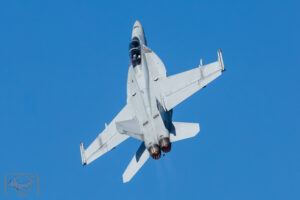
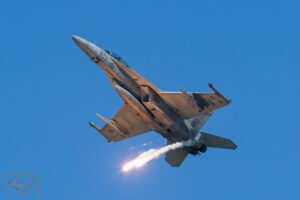
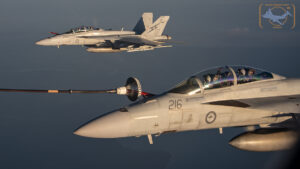
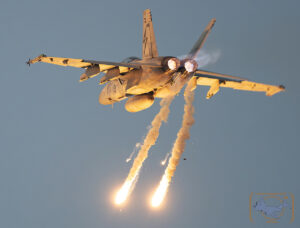
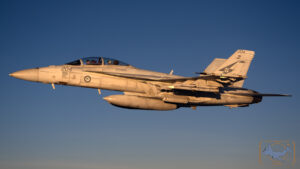
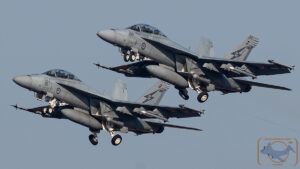
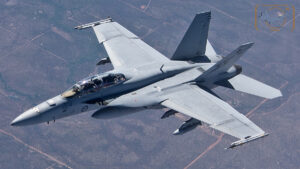
F/A-18F Super Hornet A44-224 flown by current (As of July 3rd 2024) Chief of Air Force Air Marshall Stephen Chapel back in 2016. Jaryd Stock
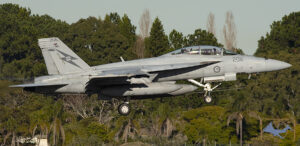
Jaryd Stock is based in Sydney Australia. He has been a die-hard aviation enthusiast from a young age when he was chauffeured around by his father to various airshows and airports around Australia. At his first Airshow he witnessed the awesomeness of a General Dynamics F-111C and immediately fell in love with aviation.
Jaryd picked up a camera at a young age and has never looked back. He now combines photography and writing to highlight “Downunder” aviation; especially U.S. DoD units. Jaryd uses Nikon cameras and lenses.

